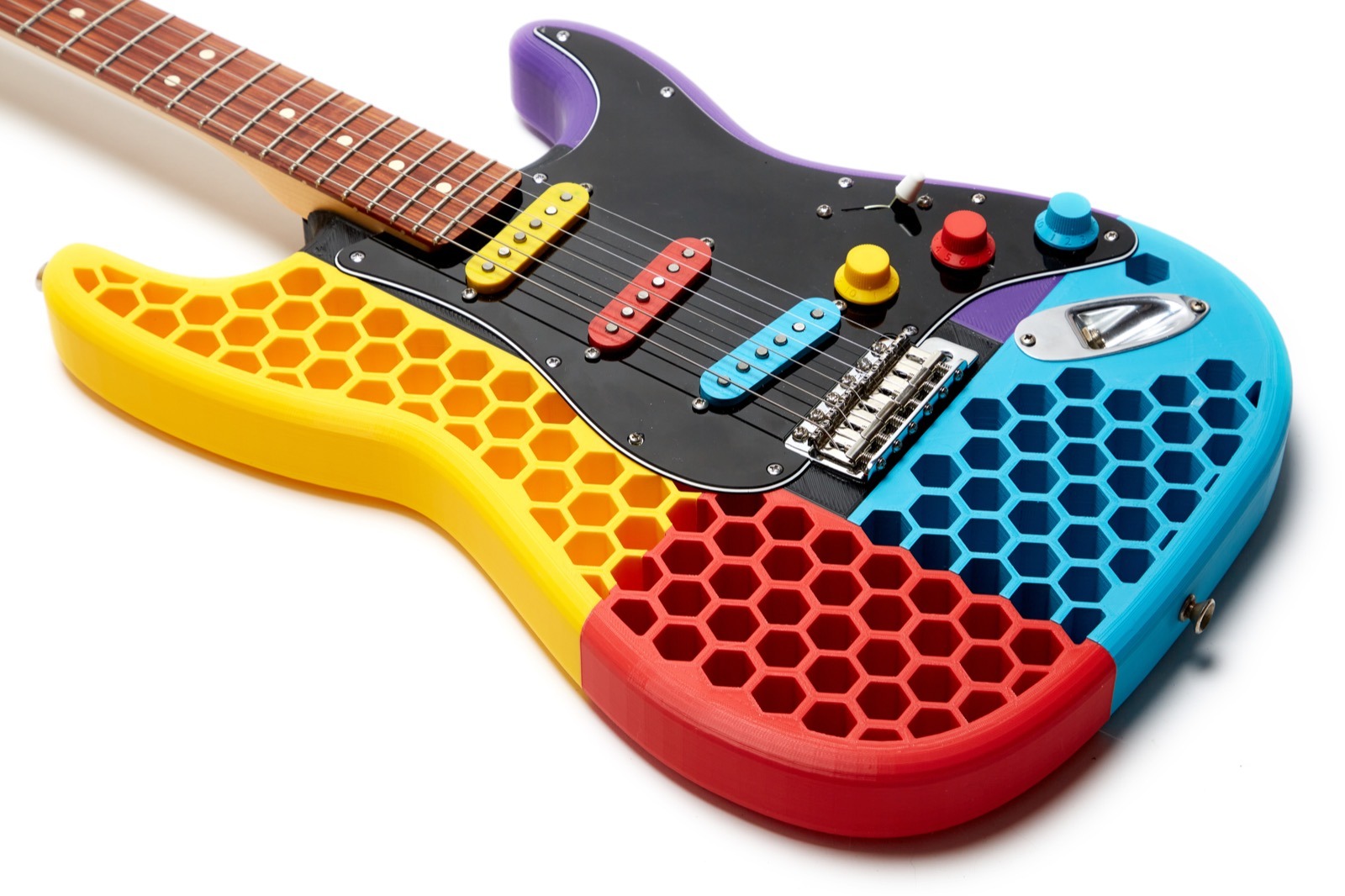The Sound of 3D Printed Guitars
I got a friend and incredible guitarist, Nadav Tabak, to do a little video clip of my 3D printed guitars in action in a range of different styles of music, and showing off some of the different designs. The clip goes through chords, finger picking, funk, blues, heavy rock, progressive, and alternative rock.
The bodies of all the guitars you see and hear in this clip were 3D printed, out of Duraform material (Nylon), on a 3D Systems sPro selective laser sintering system (SLS). This technology allows us to make incredibly intricate designs that just could not be made any other way.
NOTE: There have been a lot of comments below about the acoustic merits of wood versus other materials, so I thought it worth re-emphasizing a fact: The guitars all have a wooden core inside the body that joins the bridge to the neck making them, effectively, a small bodied wooden guitar. If you want to know more about this, visit the ‘Construction’ page of my website or view the video clip on the making of a 3D printed guitar on the website..
You can find the specs of each particular guitar used in the clip on my website at www.odd.org.nz

The choice of materials in acoustic design can significantly impact the sound quality and characteristics of musical instruments, architectural spaces, and audio equipment. Wood, in particular, is valued for its acoustic properties and is commonly used in various applications. Here are some of the acoustic merits of wood compared to other materials:
- Resonance: Wood has natural resonant properties that contribute to its ability to produce warm, rich, and resonant sound. In musical instruments such as guitars, violins, and pianos, the resonance of the wood enhances the tone and timbre of the instrument, resulting in a more pleasing and vibrant sound.
- Sustain: Wood is known for its ability to sustain vibrations, allowing musical notes to ring out and decay gradually over time. This characteristic is desirable in instruments such as guitars and drums, where sustain contributes to the overall musical expression and tonal quality.
- Density and Hardness: Different types of wood have varying densities and hardness levels, which affect their acoustic properties. Hardwoods like maple and mahogany are prized for their dense, rigid structure, which can produce clear, articulate sound with well-defined overtones. Softwoods like spruce and cedar are valued for their lighter weight and flexibility, which can result in a more responsive and dynamic sound.
- Absorption and Reflection: Wood has the ability to absorb and reflect sound waves to varying degrees, depending on its density, grain pattern, and surface treatment. In architectural acoustics, wood paneling, flooring, and furniture can help control reverberation and echo in a room, creating a more balanced and pleasant listening environment.
- Aesthetics: In addition to its acoustic properties, wood is valued for its natural beauty and aesthetic appeal. The grain patterns, colors, and textures of different wood species can enhance the visual appeal of musical instruments, recording studios, concert halls, and home audio systems, creating a harmonious and inviting atmosphere for listeners.
While wood offers many acoustic merits, it’s important to note that other materials, such as metals, plastics, and composites, also have unique acoustic properties that can be advantageous in certain applications. Ultimately, the choice of materials in acoustic design depends on factors such as the desired sound characteristics, durability, cost, and aesthetic preferences of the designer or musician.